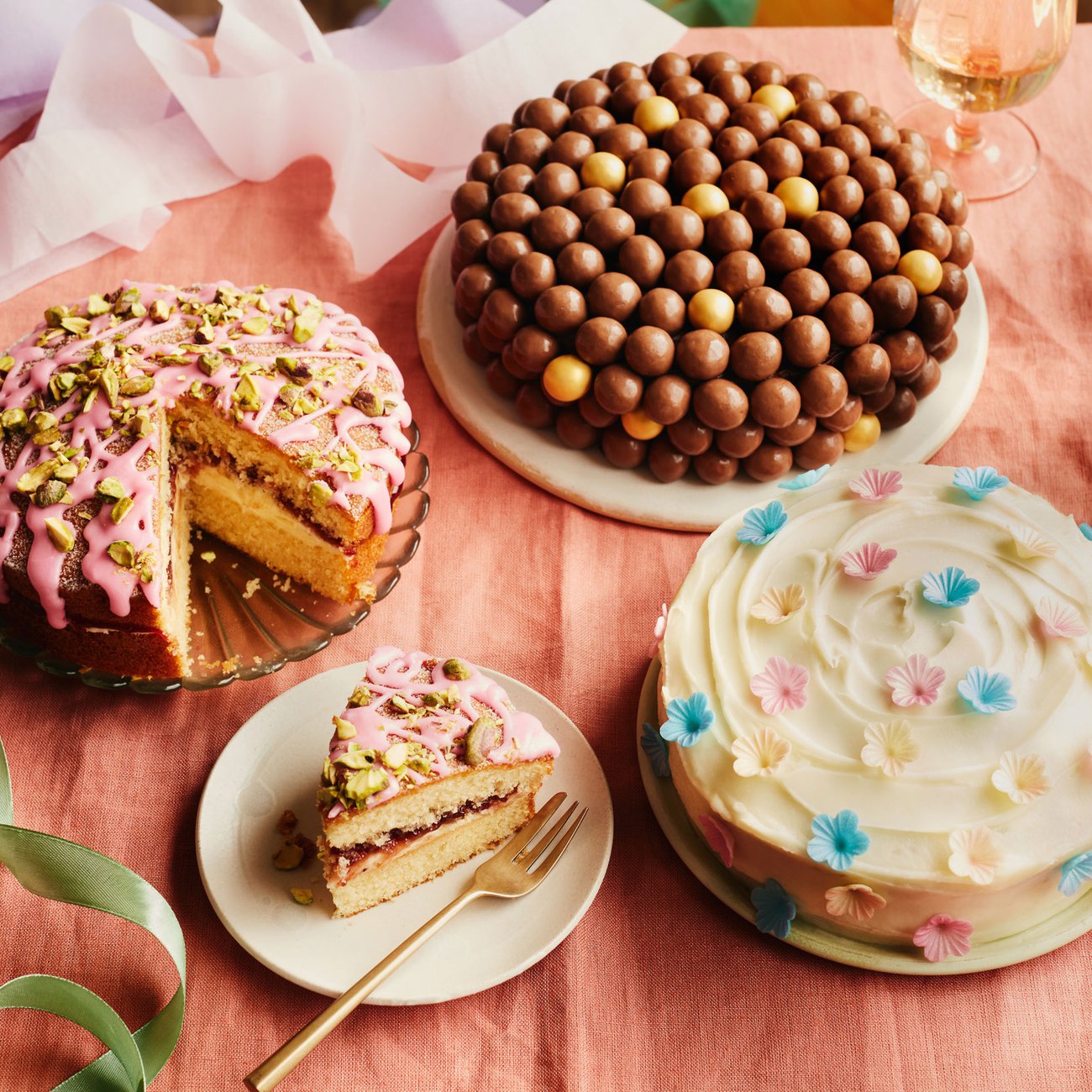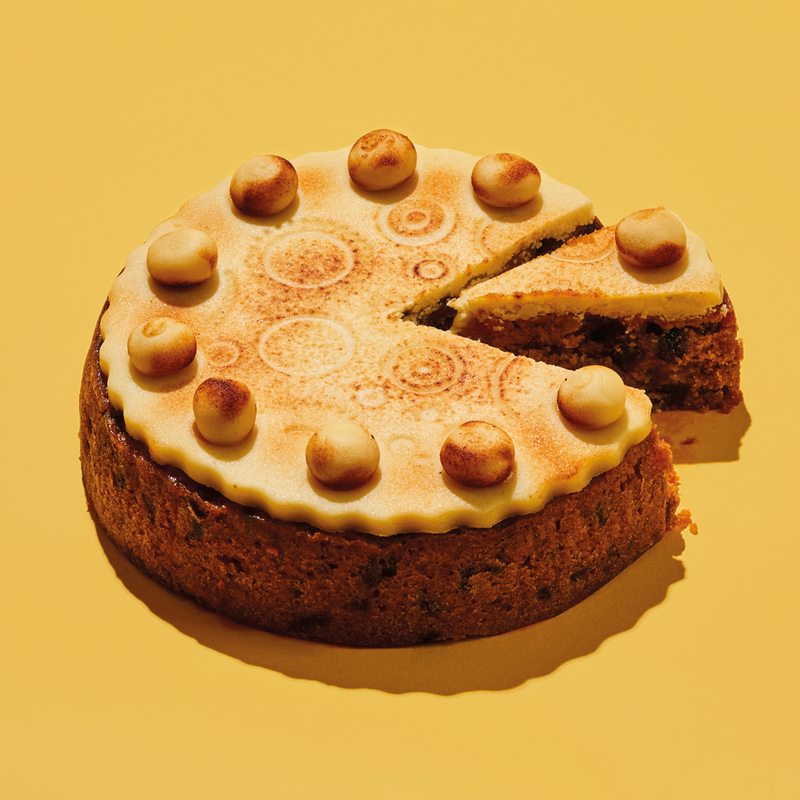Make a wish

They haven’t always come with edible flowers, satin ribbons and secret, confectionery-filled centres, but cakes have been made to celebrate birthdays for centuries, all over the world. The Swedish have their ‘princess’ pound cake decorated with marzipan; in India, creamy-squidgy mawa cake is a common sight at birthdays, while the Chinese eat steamed buns shaped like peaches, filled with a paste made from lotus flower seeds. As so often, it’s thought to be the Ancient Greeks who got there first.
100 years of birthday cakes
1921 The first adverts for sprinkles appeared – though hundreds and thousands, as they are known in the UK, have existed in some form as far back as the late 18th century.
1920s Pre-made cake mixes became available – requiring water and sometimes eggs or oil – though the idea only took off in the 1950s.
1939-1945 Wartime shortages meant people had to get creative, sharing recipes for carrot, potato and dried-egg-based cakes, with varied success.
1983 Toshio Takahashi filed a patent in Japan for a ‘self-ignited candle’ that had magnesium in the wick to ensure it would keep relighting. ‘Trick candles’ (still a UK favourite) must have been invented earlier than this, however, because they were banned in Canada in 1977 over fire-safety concerns.
1990s The printed photo cake trend took off, with even supermarkets offering the service. Who wouldn’t want to celebrate their birthday by eating their own face?
2014 Cakes got naked with just a whisper of buttercream around their outsides – a technique that is harder than it looks.
2016 ‘Mirror glaze’ cakes went viral on Instagram. The technique itself is 40 years older, but Russian baker Olga Noskova popularised it almost overnight.
2022 A trend for hyper-realistic cakes was born, following a viral meme and flagshipped by the Netflix show Is it Cake?, in which contestants make cake look like a myriad of inedible objects, from handbags to octopuses.


Artemis was goddess of the moon (and is associated with a surprising collection of other things, including both virginity and childbirth), and her birthday was honoured by a lunar-inspired round cake, aglow with candles.
Centuries later, in medieval Germany, it was feared that evil spirits were especially active on a child’s birthday. To protect them, a lebenslicht – light of life – candle was kept burning around a cake for the whole day. Once the evening meal had been consumed, the candle could be blown out (clearly demons go to bed early) and the resulting smoke was thought to carry good wishes for the child up to heaven.
‘CAKES IN THE SHAPE OF BARBIE’S SKIRT WERE IMMORTALISED BY NIGELLA LAWSON’
One of the first accounts of a full-blown cake for a birthday party comes from 1746. Count Ludwig von Zinzendorf, a religious and social reformer from Dresden, ordered two-foot-high gilded wooden letters to spell out his own name and illuminated every window in the house with candles. A contemporary account by Andrew Frey describes the event as a ‘famous spectacle’ and a ‘scene of gluttony’. At the feast’s centre ‘was a cake as large as any oven could be found to bake it, and holes in the cake according to the years of the person’s age, every one having a candle stuck into it, and one in the middle.
Before the Industrial Revolution, birthday cakes were only for the likes of Count Ludwig – those with serious wealth. In fact, your average Brit may not have even known when their birthday was unless they were born after 1837,» when it was made a legal requirement to register births. But as machines took over Britain (and, in turn, America), home baking went global. The ingredients required to make cake became cheaper, and the equipment needed to mix and bake them became more accessible (brick ovens only became commonplace in American homes in the late 18th and early 19th centuries, and you definitely can’t bake a cake without an oven).
By this time people were beginning to blow out their candles to the now-essential ‘Happy Birthday’ song. First written down in 1912, the melody is based on an 1893 school welcome song, ‘Good Morning to All’, which is usually attributed to a pair of sisters from Kentucky, Patty and Mildred J Hill, a school teacher and composer respectively. Piped icing remained a secret skill of elite chefs in the late 1800s, but became more commonplace over the century that followed. Meanwhile, Victorian cookbooks were the first to include recipes specifically for ‘birthday cake’. One contributor to American Good Housekeeping magazine in 1886, a clearly inexhaustible ‘Rosamond E’, described preparing 12 sorts of cake for a birthday party: ‘lady cake’ was the centrepiece, flanked by sponge, marble and cupcakes all decorated with white icing, then chocolate, coconut, lemon, spice, ribbon, cream, fig and jam cakes.
In the 1920s the mass production of cheaper moulds meant that quirkily shaped cakes became more popular. The Joy of Cooking, the classic American cookbook first published in 1936, offered a recipe for a lamb-shaped children’s birthday cake. Readers weren’t to worry if the lamb’s head came off. while they tried to remove the cake from the tin – ‘It probably will’, wrote the author wryly – as they could simply reattach it with some well-placed toothpicks. After the hardships of wartime, the market for birthday cakes boomed as people in the West became richer and food became cheaper than ever before. Every generation has had its cult cake. Cakes in the shape of Barbie’s skirt, into which the home-baker simply pushed the doll, grew in popularity in the mid-20th century, and were immortalised by Nigella Lawson, who included a version in her seminal 1998 book, How To Be A Domestic Goddess. In 1990, supermarket caterpillar cakes offered an affordable favourite for those who couldn’t face DIY.
So next time you scoff a celebratory slice, remember the many layers of symbolism that went into the moment. The ritual consumption of birthday cake continues to express the love, wealth and protection that partygoers wish upon the birthday girl or boy. And really, is a party even a party without a cake?
Waitrose Food Deputy Editor Leah Hyslop has an abiding affection for the divisive almond confection”
